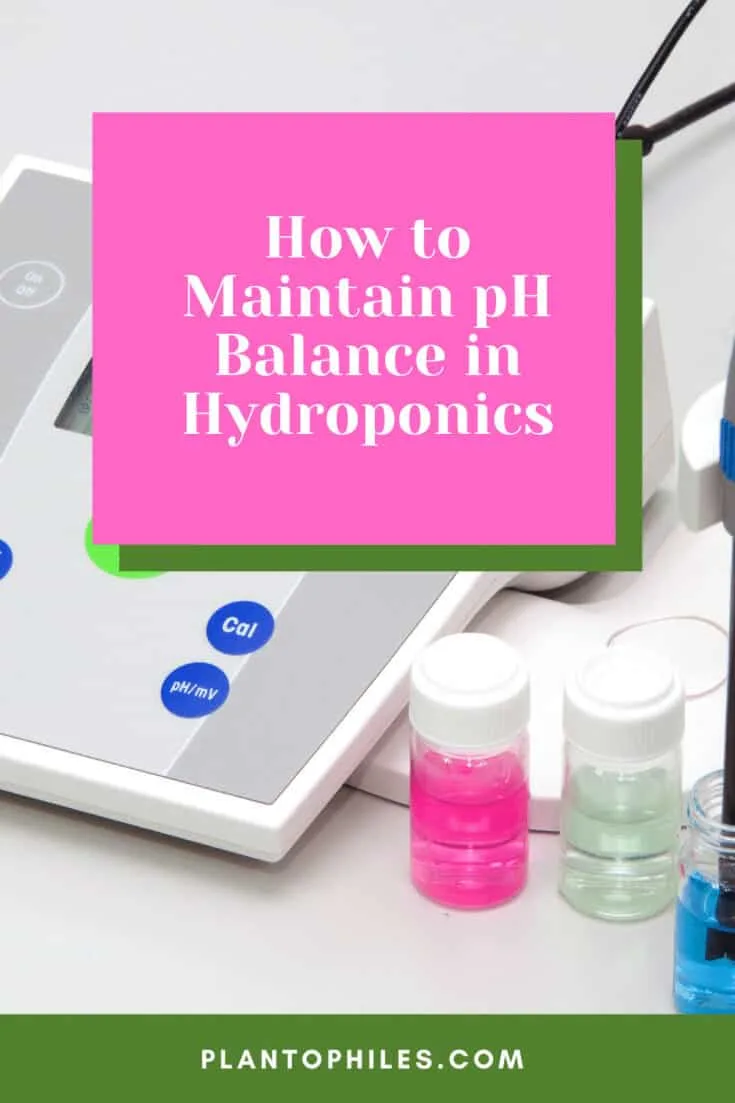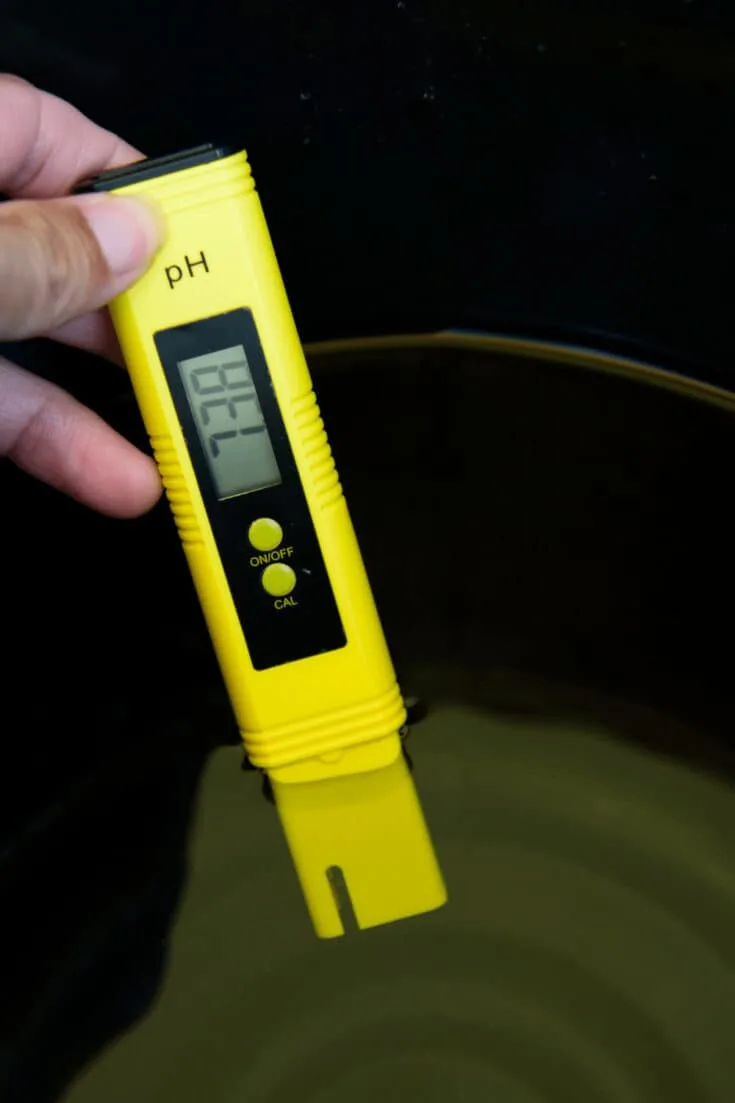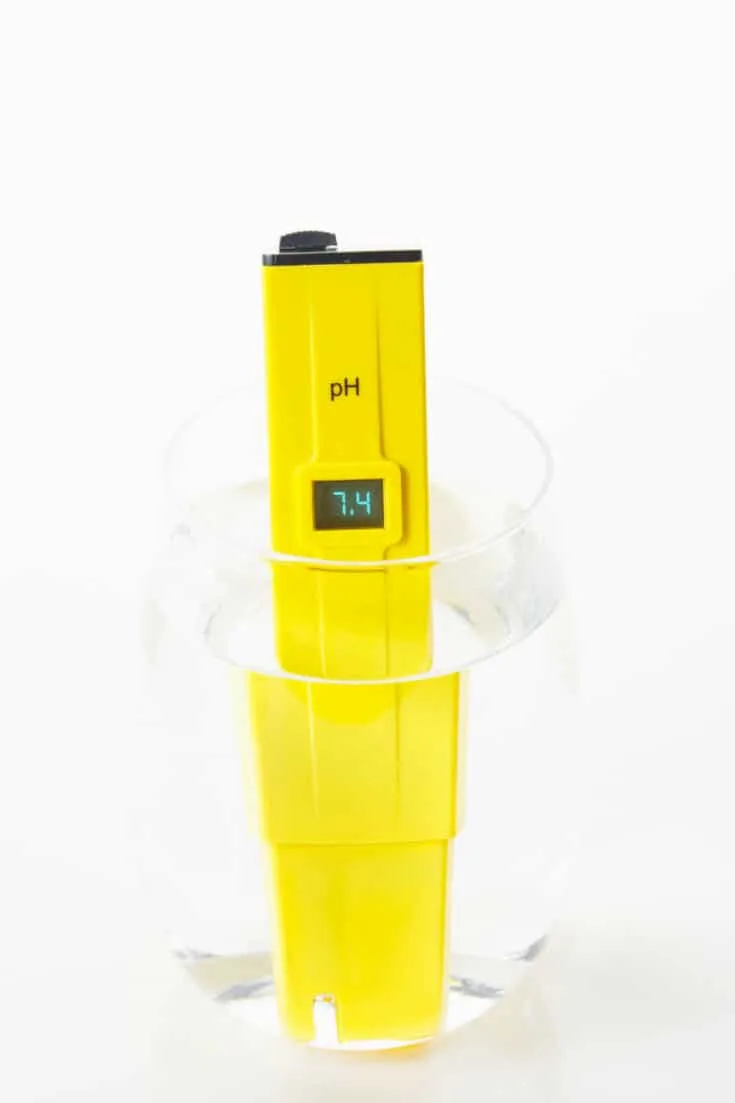The pH meter measures how acidic or how basic the hydrogen iron content is in your hydroponic system.
When it comes to a hydroponic system, you want to maintain a steady pH level to promote optimal growth. But how to maintain pH balance in hydroponics so it doesn’t change all the time?
There are scientific papers that suggest predictive modeling to determine and calculate the needed pH levels of specific plants in different growth stages as seen on Science Direct.
This will greatly lower the manpower needed to adjust pH constantly.
Too high or too low of a pH level is detrimental and can kill your crops, depending on how far off the levels are.
But these methods might not be feasible for the amateur grower at home. There are certainly easier ways to achieve the same.
So how do you maintain a proper pH balance to ensure that your hydroponic crops will flourish?
Table of Contents
How to Maintain pH Balance in Hydroponics
To maintain your pH levels in your hydroponic system, frequently measure the levels with a pH reader. If the pH levels are off, you can correct them by using a pH up or pH down chemical. One of the main ways to maintain a specific pH level is to choose a specific growing medium and it matters what water you use. You can either use tap water, distilled or osmosis water, and of course rainwater. An alternative to regulating the pH is using citric acid and vinegar. But this is only feasible for smaller systems.

Maintaining pH Balance in Hydroponics Video Tutorial
Why Maintaining Your Hydroponic Systems’ pH Levels is so Essential
pH levels are key to growing plants. If the levels aren’t in the correct range, your plants won’t be able to get enough nutrients.
Different plants have different pH level needs.
This matters to the soil that you use for your plants and is even more important when it comes to a hydroponic system.
Plants rely on nutrients that they absorb from different minerals.
A pH level that is too low will lead to your plants absorbing a higher level of nutrients and micronutrients than they should.
If the pH level is too high, your plants will become nutrient and micronutrient-starved because they cannot take in sufficient nutrients.
Constant monitoring of the pH level means that you can get ahead of your plants’ health and correct the levels.
Especially early on, if you let your pH levels get too high or too low, it can be harder to save new plants that are beginning to show signs of discoloration or withering.
In the first few days when setting up a new hydroponics system such as a DWC, NFT, Ebb and Flow, Drip System, Aeroponics, or a simple Wick System it is important to closely monitor the pH level.
pH levels can fluctuate a lot, especially in the beginning. In addition, different plants have different pH level needs. Please have a look at the hydroponics pH level chart that I created for your convenience.
Hydroponic pH level Chart
| Plant | Hydroponic pH Level |
| Aroids | 5.5-6.5 |
| Asparagus | 6.0-6.8 |
| Avocado | 6.0-6.5 |
| Basil | 5.5-6.5 |
| Bean | 6.0-6.5 |
| Beetroot | 6.0-6.5 |
| Blueberry | 4.5-5.8 |
| Broccoli | 6.0-6.8 |
| Brussels Sprouts | 6.5-6.8 |
| Cabbage | 6.2-6.6 |
| Carrots | 6.3-7.5 |
| Cauliflower | 5.5-6.5 |
| Celery | 6.5 |
| Chili | 5.5-6.5 |
| Chives | 6.0-6.5 |
| Cilantro | 6.5 |
| Coriander | 5.5-6.7 |
| Cucumber | 5.5 |
| Dill | 5.5-6.4 |
| Eggplant | 5.5-6.0 |
| Eggplant | 5.5-6.0 |
| Fennel | 6.4-6.8 |
| Garlic | 6.0 |
| Ginger | 5.5-8.0 |
| Ginseng | 5.5-6.5 |
| Lavender | 6.4-6.8 |
| Leek | 6.0 |
| Lemongrass | 5.5-6.4 |
| Lettuce | 6.0-7.0 |
| Mint | 6.0-7.0 |
| Oregano | 6.0-8.0 |
| Pak Choi | 5.5-6.5 |
| Potatoes | 5.0-6.0 |
| Radish | 6.0-7.0 |
| Rosemary | 5.5-6.0 |
| Sage | 5.5-6.5 |
| Spinach | 5.6-6.0 |
| Sweet Corn | 6.0 |
| Tomatoes | 6.0-6.5 |
| Watermelon | 5.8 |
| Watermelon | 6.0-6.8 |
| Zuccini | 6.0 |
When to adjust pH Levels
pH levels should only be adjusted once you added all the nutrients you wanted to add to your hydroponics system as the nutrients themselves will impact the pH level.
Once the water and the nutrients are added, you can check the pH level.
Use a pH level meter and check the pH level. It is important that the pH meter is correct. calibrated.
Have a look at the ph level chart and look for the right pH level for the vegetable, fruits or plants you are growing.
If the pH is too high, use a pH down liquid to adjust the pH level. However make sure to only use a little, as even a few drops can make a big difference.
If the pH level is too low, use a pH-up liquid to adjust the pH level.
It is best to check the pH level again once everything is settled as the pH level will fluctuate a lot in the beginning.
In reality, you only ever need a pH up or pH down liquid and not both as your tab water (in case you use tap water) is either too high or too low for the plants you are growing.
Eg. in my case my water at home is too hard and I therefore only need a pH down. If I added too much pH down I can simply add more water to the hydroponics system and the pH will increase again.

How to Keep pH Levels at a Balanced Level
pH levels are a combination of a few factors that first come down to when you set up your hydroponic system.
Select a good growing medium, the water you’ll use in your system, and the temperature of the water.
Also, different plants flourish at different pH levels.
When it comes to your hydroponic system, the ideal range of your pH should be between 5.5 and 6.5.
According to Oklahoma State University, a pH level between 6.0-6.5 is optimal for nutrient intake.
The starting pH of your water is a great indicator of how easy it will be to maintain your pH levels in your hydroponic system.
Using distilled or reverse osmosis water can eliminate many added minerals that can throw your pH levels off.
Water in different regions has different basic or acidity levels.
Eliminating that means that you don’t have to account for changes during different seasons, or if you relocate.
If your water source is near natural, then you can use a store-bought pH up or pH down to maintain those levels within the desired range.
While there are other ways to alter your pH levels, the one benefit of finding a store-bought compound is that you will get used to how much and how often you need to add over time.
The results will be similar the majority of the time.
If you have a pH for your low level, you’ll want to use lower pH to get the level to pH 6’0 to 6.2. If you have an acidic pH, you’ll want to take the pH down.
While there are several ways to adjust your pH, there are some methods that can harm your plants and add unwanted chemicals.
Using a store-bought pH compound means that you’ll get accustomed to how much or how little to add to bring the pH level to the desired range.
Your pH levels will also remain at a consistent level.
The growing medium that you select also has a big impact on the pH level of your hydroponic system.
Some of the most popular growing mediums are gravel, perlite, sand, sawdust, and Rockwool.
As with any substance, they all have different pH levels.
Consideration should be taken when determining what type of cop you are growing.
Otherwise, you will need two to do frequent maintenance to keep the pH level balanced..
One of the areas that may not come to mind when pH comes into play is the temperature of the water.
The truth can age the pH if it is at too low or too high of a level.
Having a hydroponic system that keeps your water temperature at a steady rate can avoid this risk.

Frequently Asked Questions About How to Maintain pH Balance in Hydroponics
How often do you need to check the pH levels in your hydroponic system?
You don’t want your levels to change in either direction a significant amount. That’s why frequent monitoring is required. I would suggest checking your pH levels once every day. Then you’re able to adjust the pH levels to ensure that they are within the balanced range.
What are some non-chemical solutions to change your pH levels in your hydroponic growth system?
If you have a smaller hydroponic growth system, you can alter the pH levels through the use of vinegar or citric acid. The only thing to keep in mind if you use this method is that it’s a method that needs to be frequently monitored and adjusted. With a small system, this can be an easy way to keep your pH balanced without the addition of commercial chemical additives.
Why are my pH levels changing so frequently? Am I doing something wrong?
Because you need to add nutrients to your system to keep your plants flourishing, many of these are acidic. As your plants begin absorbing the nutrients into their roots, the pH levels in your hydroponic system will naturally rise. After adding nutrients, check your pH levels to ensure that they don’t have too much acidity.
In Conclusion About How to Maintain pH Balance in Hydroponics
To maintain pH balance choose the right water and growing medium, and measure your pH levels frequently using a pH meter. If the levels are too high or low, you can either use a pH up or pH down chemical to correct to the desired range.

Daniel has been a plant enthusiast for over 20 years. He owns hundreds of houseplants and prepares for the chili growing seasons yearly with great anticipation. His favorite plants are plant species in the Araceae family, such as Monstera, Philodendron, and Anthurium. He also loves gardening and is growing hot peppers, tomatoes, and many more vegetables.


